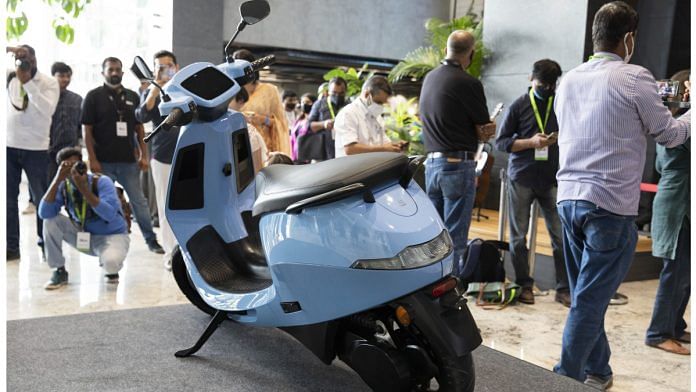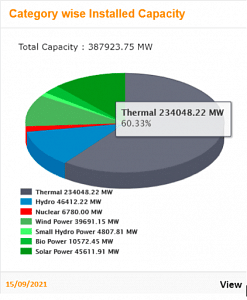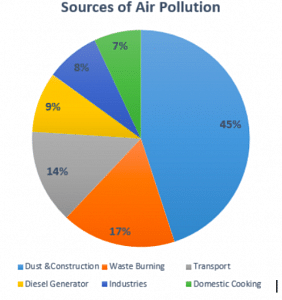
Thank you dear subscribers, we are overwhelmed with your response.
Your Turn is a unique section from ThePrint featuring points of view from its subscribers. If you are a subscriber, have a point of view, please send it to us. If not, do subscribe here: https://theprint.in/subscribe/
People all around the world perceive buying an electric vehicle, or EV, as a personal contribution in reducing global warming, air pollution and making this world a better place to live. Thanks to the marketing genius of Tesla. Any brand aims to reach a position where it can associate itself with a social cause, but in this case the whole EV industry is associated with a social cause and no wonder individual brands are jumping on to associate themselves with this cause.
Ola Electric scooter in its search ad says, “join the revolution, reserve your Ola Electric scooter today”.
India is no different. Ola Electric has sold more than ₹1,100 crore worth of electric scooters during a two-day sale. In August, Tata Nexon EV clocked 1,022-unit sales in August 2021.
This is the first time an electric car in the personal mobility segment has recorded a 4-digit sales figure in a month. It is obvious to call this a revolution.
However, we must ponder how much of this revolution would help India. Is this only a marketing façade or a genuine change India is part of? Let’s answer this question by looking at different aspects of owning an EV.
Is your battery charged?
Charging infrastructure is almost non-existent in India currently. In these Covid-19 times, when even most of the offices are not open, most people charge their EVs at home. India relies predominantly on thermal power for its energy requirements. The thermal power plants have serious impacts on land, soil, and air. They are also said to emit large amount of mercury and generate large quantity of fly ash which destroys the surrounding environment. These plants also consume a large amount of water.

Source: https://npp.gov.in/dashBoard/cp-map-dashboard
| State/Union Territory | Thermal (in MW) | Nuclear (in MW) | Renewable (in MW) | Total (in MW) | % of National Total | % Renewable |
| Western Region | 97,502.49 | 1,840 | 37,759.20 | 1,37,101.69 | 35.69% | 27.54% |
| Southern Region | 47,687.96 | 3,320 | 55,146.81 | 1,08,338.03 | 28.95% | 51.95% |
| Northern Region | 49,020.26 | 1,620 | 36,453.62 | 87,093.88 | 23.32% | 41.86% |
| Eastern Region | 34,967.05 | – | 7,460.81 | 42,427.86 | 11.34% | 17.58% |
| North-Eastern Region | 2,562.95 | – | 2,095.91 | 4,658.86 | 1.24% | 44.99% |
| Total | 2,31,320.72 | 6,780 | 1,36,098.33 | 3,74,199.04 | 100.00% | 36.37% |
Source: https://en.wikipedia.org/wiki/States_of_India_by_installed_power_capacity
Almost 60% of our country’s electricity requirements are met by thermal power plants. If anything, buying more EVs would generate more demand for electricity and hence thermal power. This would be the opposite of making India a better place to live.
How about clean air?
Air pollution in India is a serious health issue. However, the major source of air pollution is not from city traffic; it’s from ‘dust and construction’. Transport (both commercial and personal) only contributes 17% to the air pollution. Buying EVs won’t clean up our air but at least it would not add up to the air pollution, either.

Source: https://en.wikipedia.org/wiki/Air_pollution_in_India
Saving on petrol?
India’s crude import bill rose over 190% at $24.7 billion in Q1 of 2021. Most of the import is consumed in the form of diesel (HSD).
| Product | Consumption (Apr-Aug in ‘000 Metric Tonnes) | Percentage of Total consumption |
| LPG | 11238.87 | 13.82 |
| HSD | 30174.16 | 37.10 |
| MS | 12107.50 | 14.89 |
| Petroleum coke | 8185.44 | 10.06 |
| Naphtha | 5959.53 | 7.33 |
| Others | 4545.58 | 5.59 |
| FO & LSHS | 2581.00 | 3.17 |
| Bitumen | 2437.05 | 3.00 |
| ATF | 1638.15 | 2.01 |
| Lubricants & Greases | 1405.36 | 1.73 |
| SKO | 636.89 | 0.78 |
| LDO | 424.29 | 0.52 |
| Total | 81333.82 |
Source: https://www.ppac.gov.in/content/147_1_ConsumptionPetroleum.aspx
Transport sector is the major consumer of diesel accounting for 70% of the total Diesel sales. In India we currently have no commercial vehicles available as EV’s.
| Category | FY 2021(Units) |
| Two-Wheelers | 143837 |
| Three-Wheelers | 88378 |
| Cars | 5905 |
| Total | 238120 |
Source: https://www.autocarindia.com/car-news/smev-cumulative-ev-sales-down-1941-percent-in-fy2021-420595
This suggests that the use of EV’s will not contribute to lowering the oil price for our country but might provide a personal relief for the owners.
Is it worth it?
Given the responses Ola and Tata have received for their EVs, it is evident that we Indians have bought the idea of making this world a better place and we are righteously making efforts at our end. When people buy an idea, change follows. This is a step in the right direction. However, these baby steps taken by the people of India can only became a true march of revolution if they are complimented by the government efforts for more renewable energy generation and OEMs’ efforts by introducing more commercially efficient vehicles to reduce the use of diesel in the years to come.
Also read: Ola’s new e-scooter factory is women-only, aims to build 10 million two-wheelers by 2022
These pieces are being published as they have been received – they have not been edited/fact-checked by ThePrint.

COMMENTS